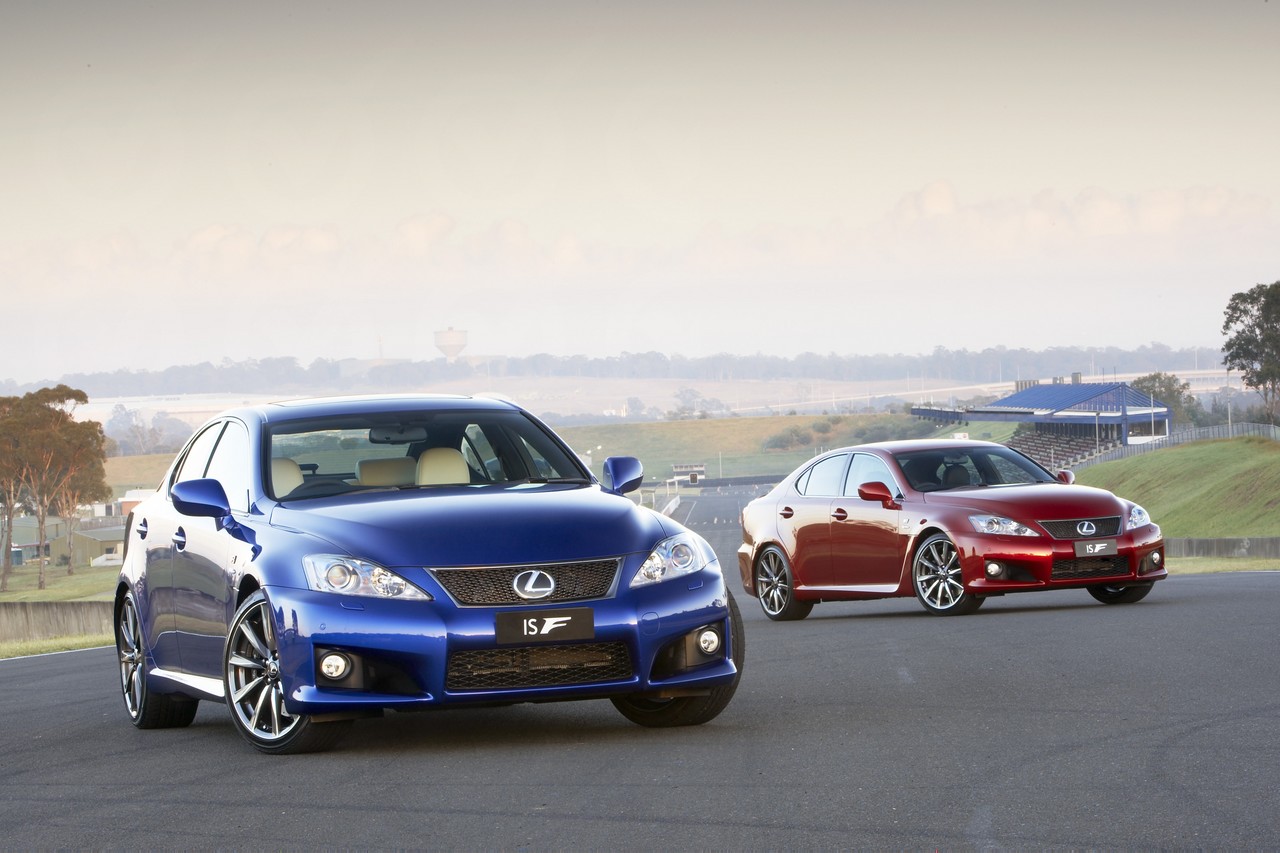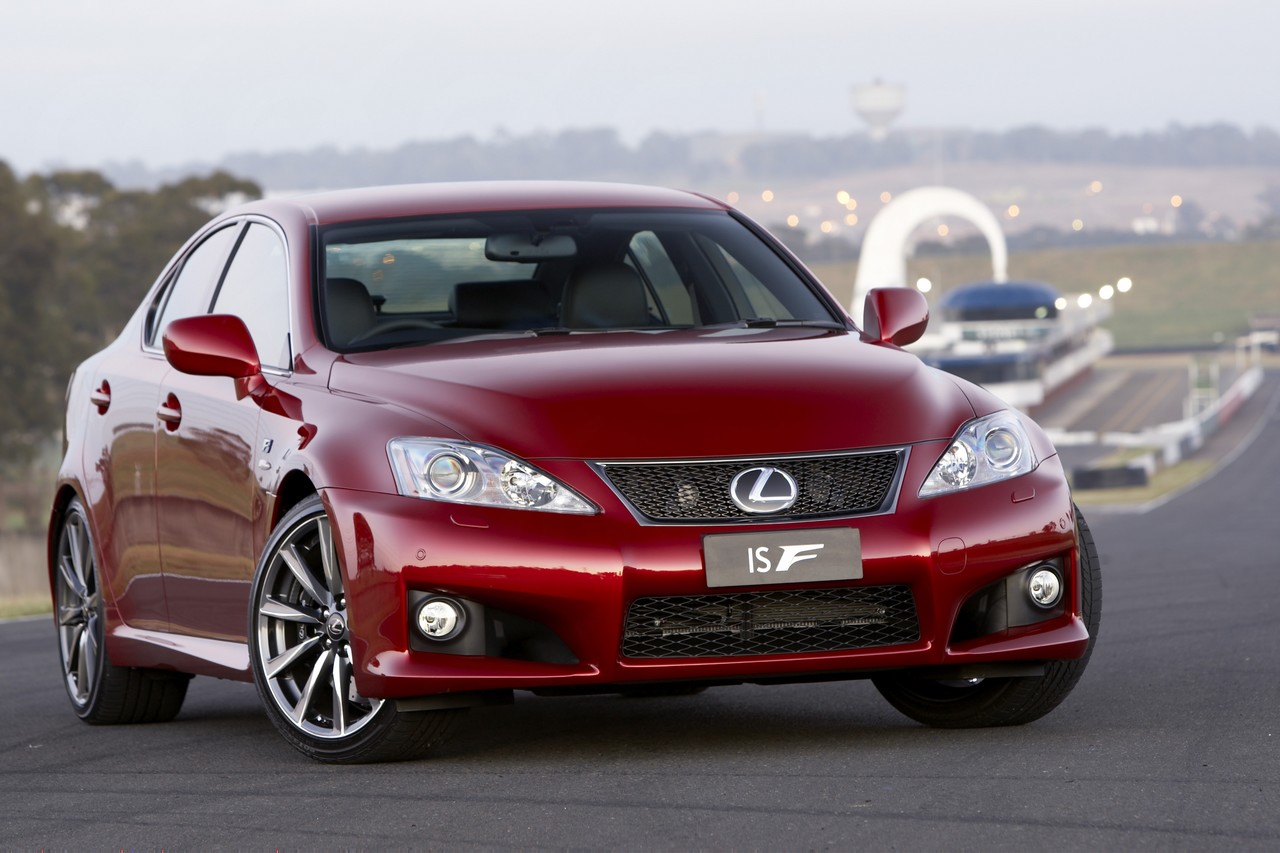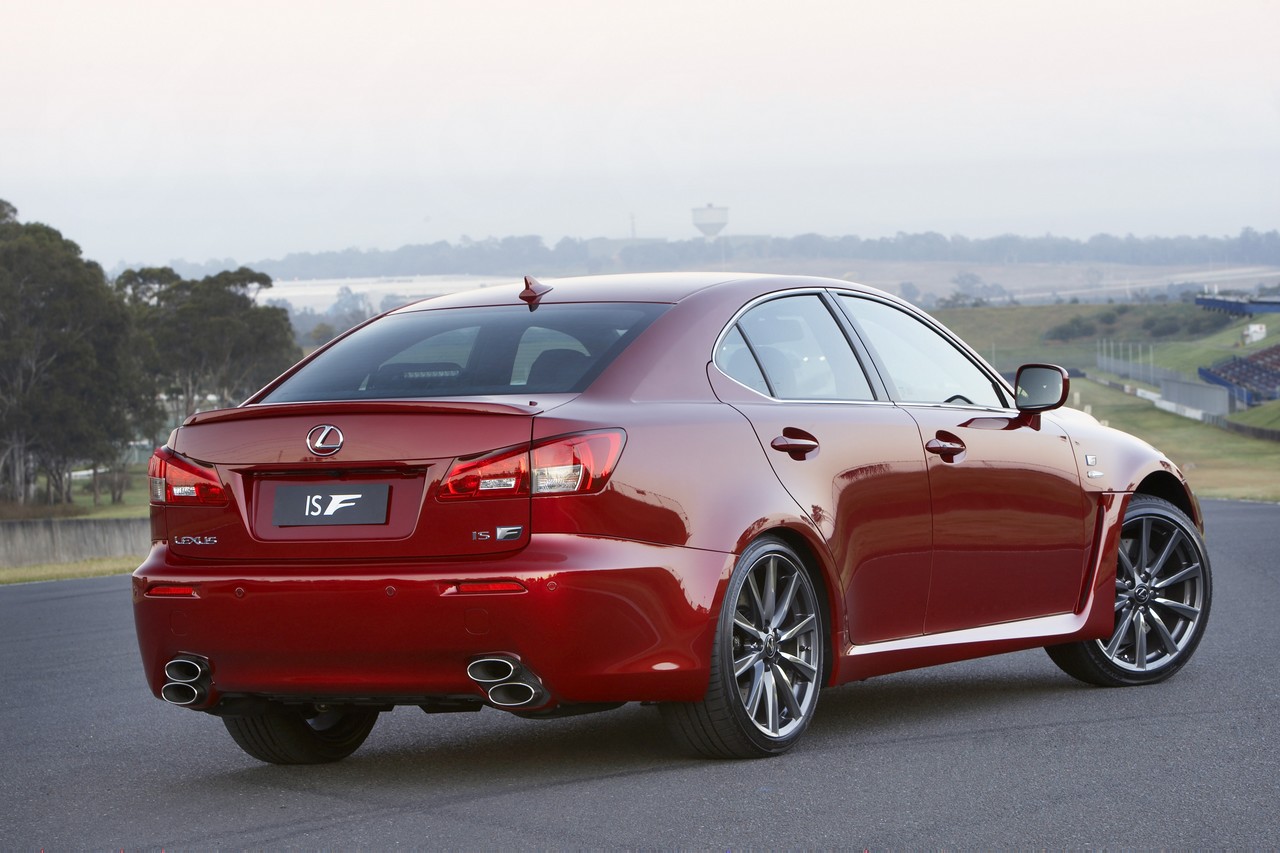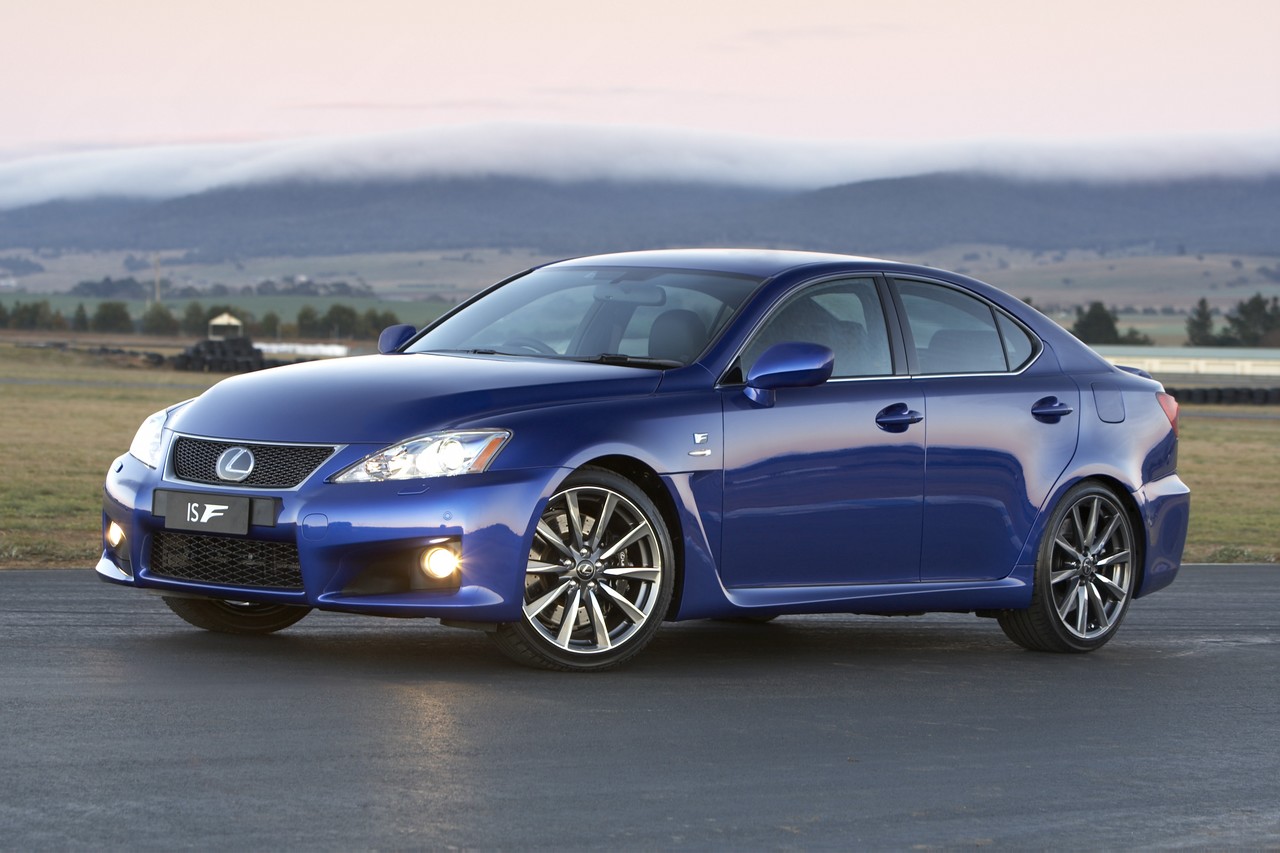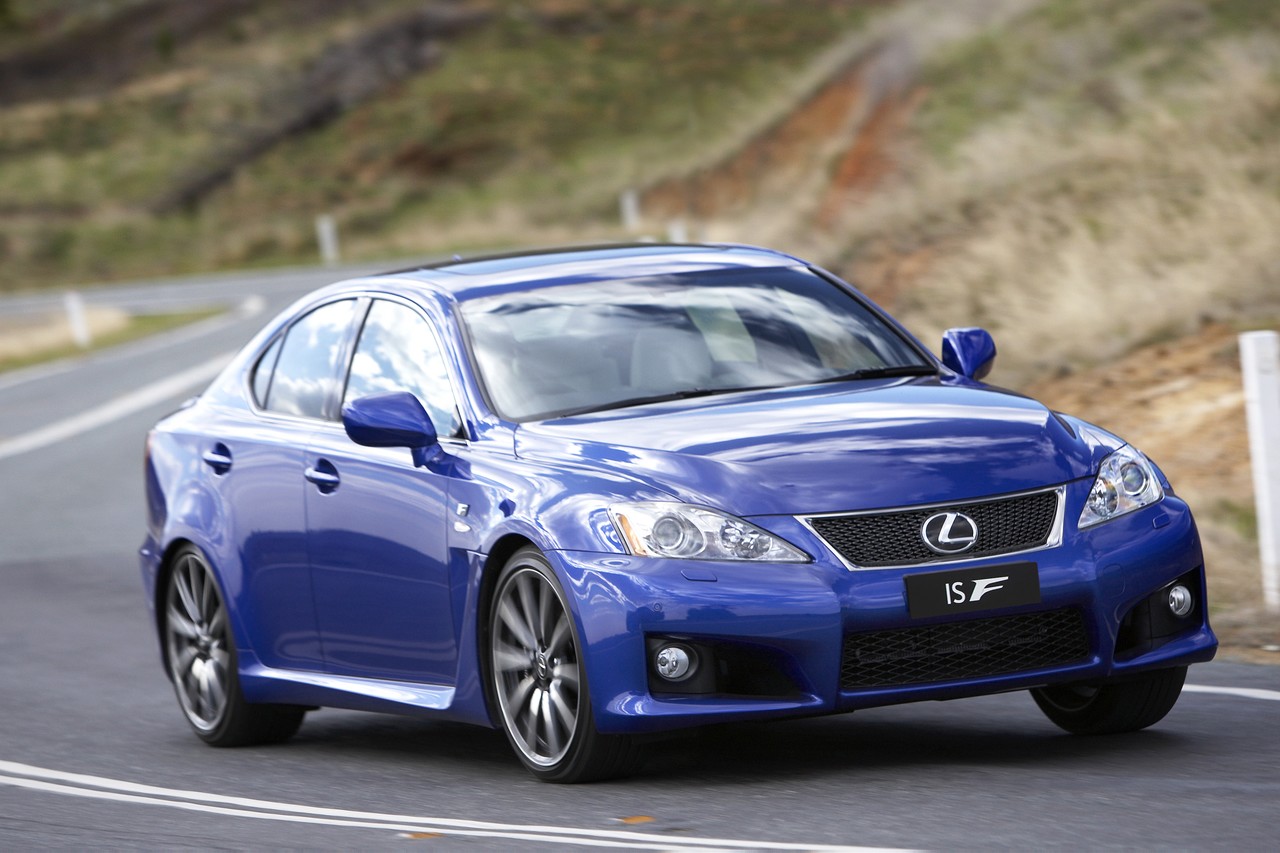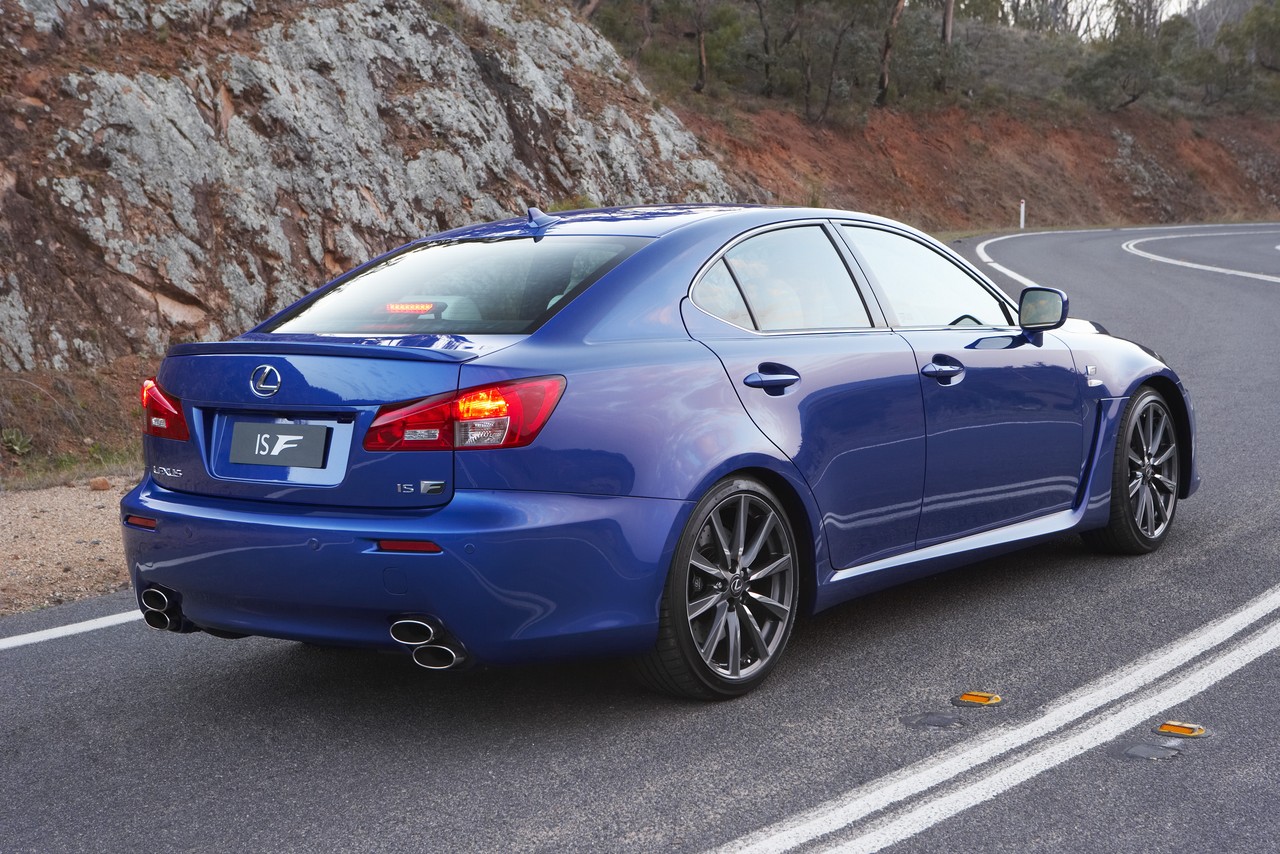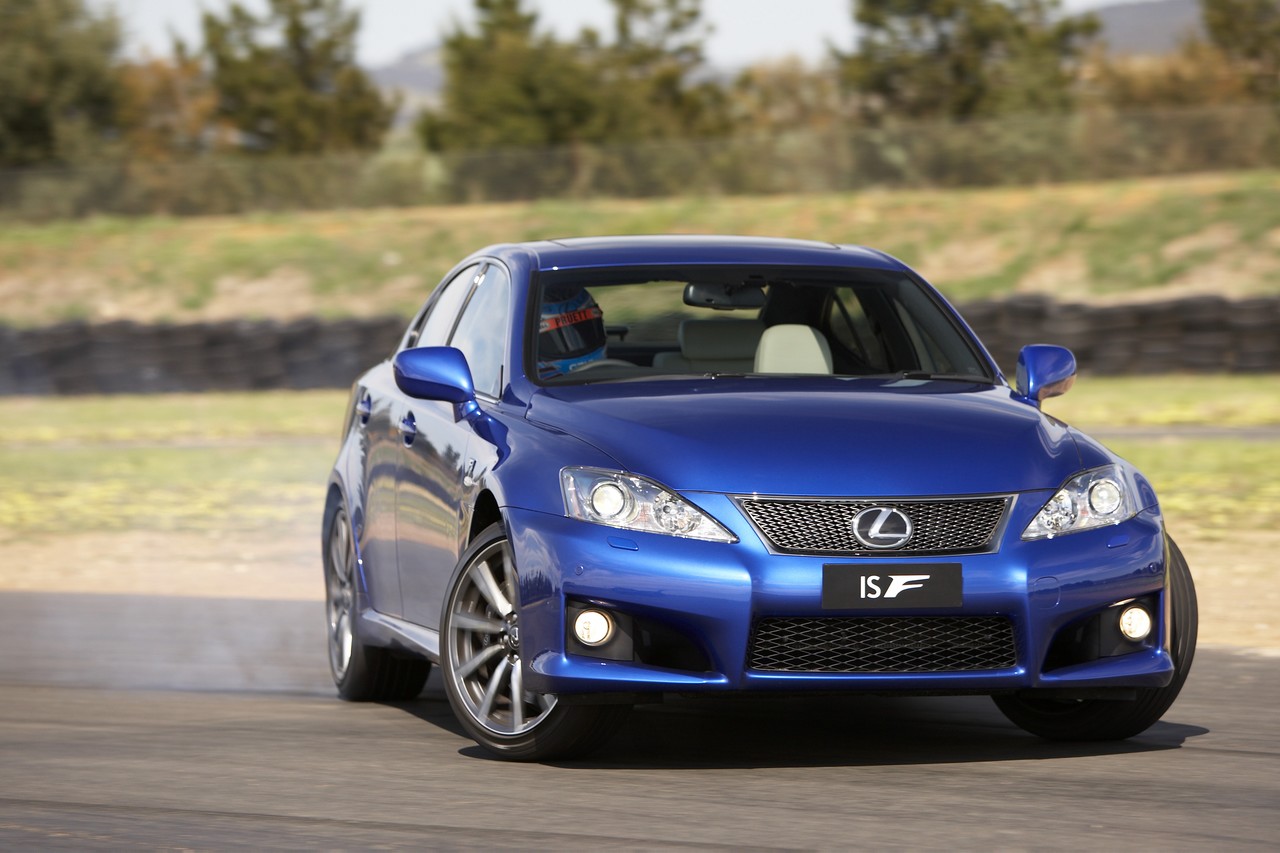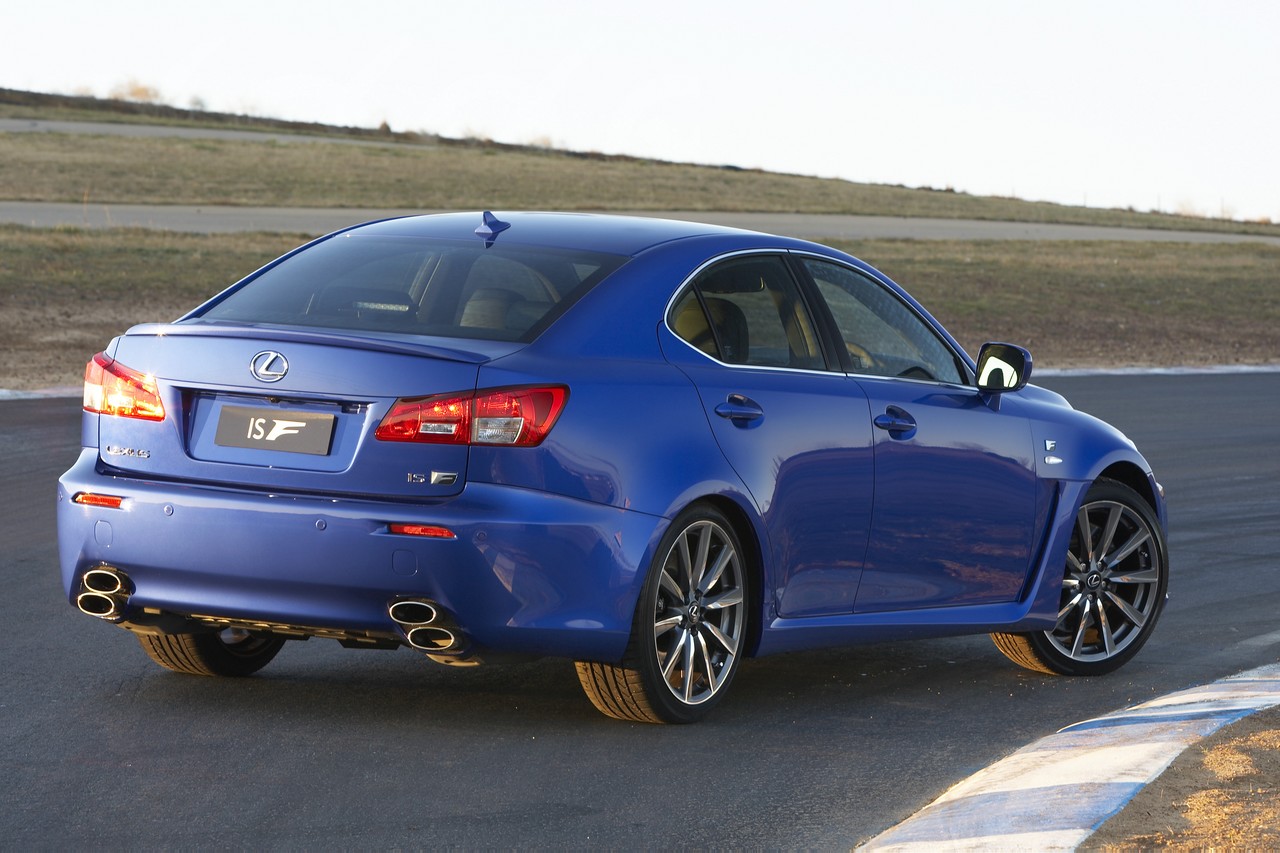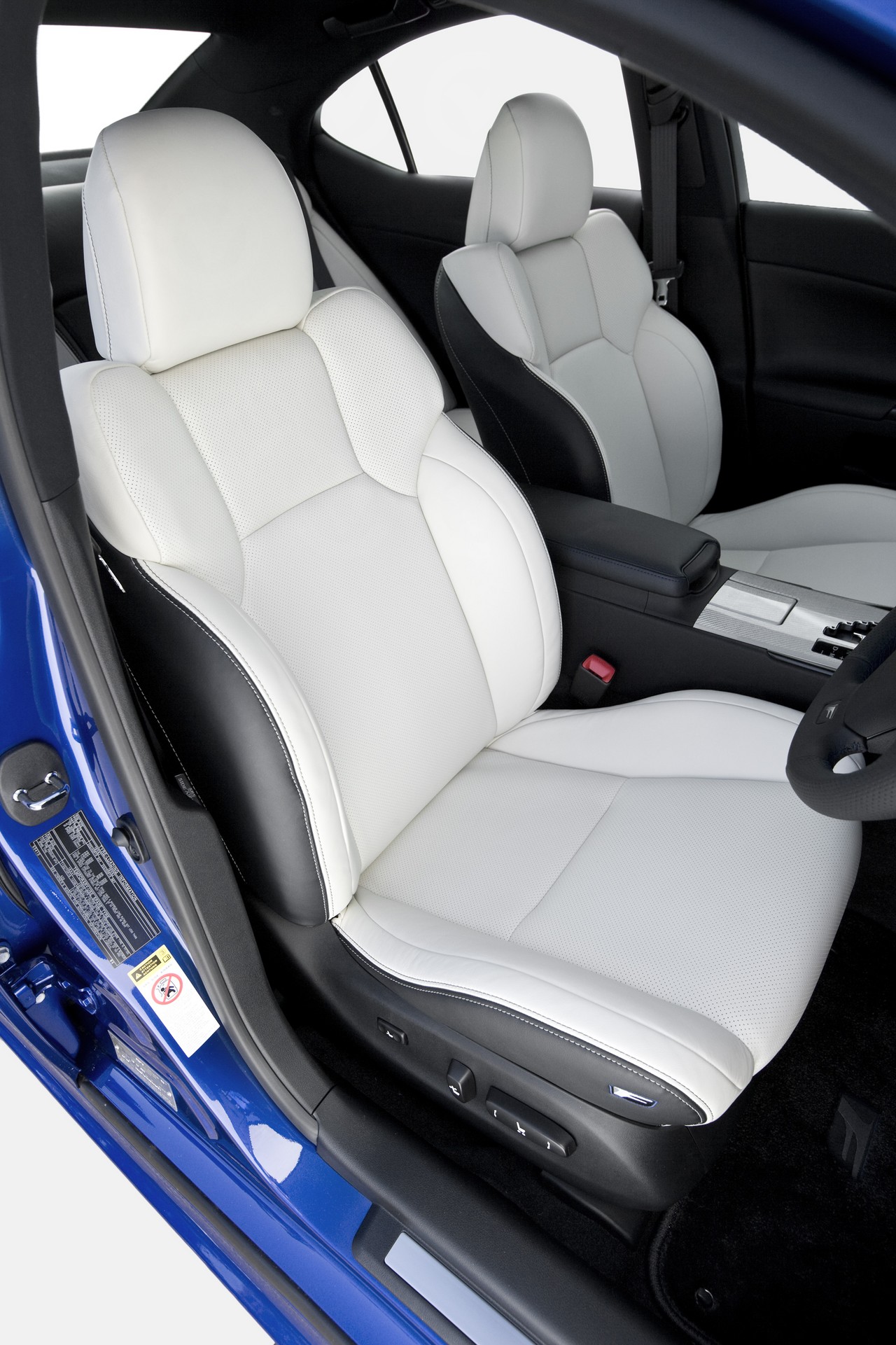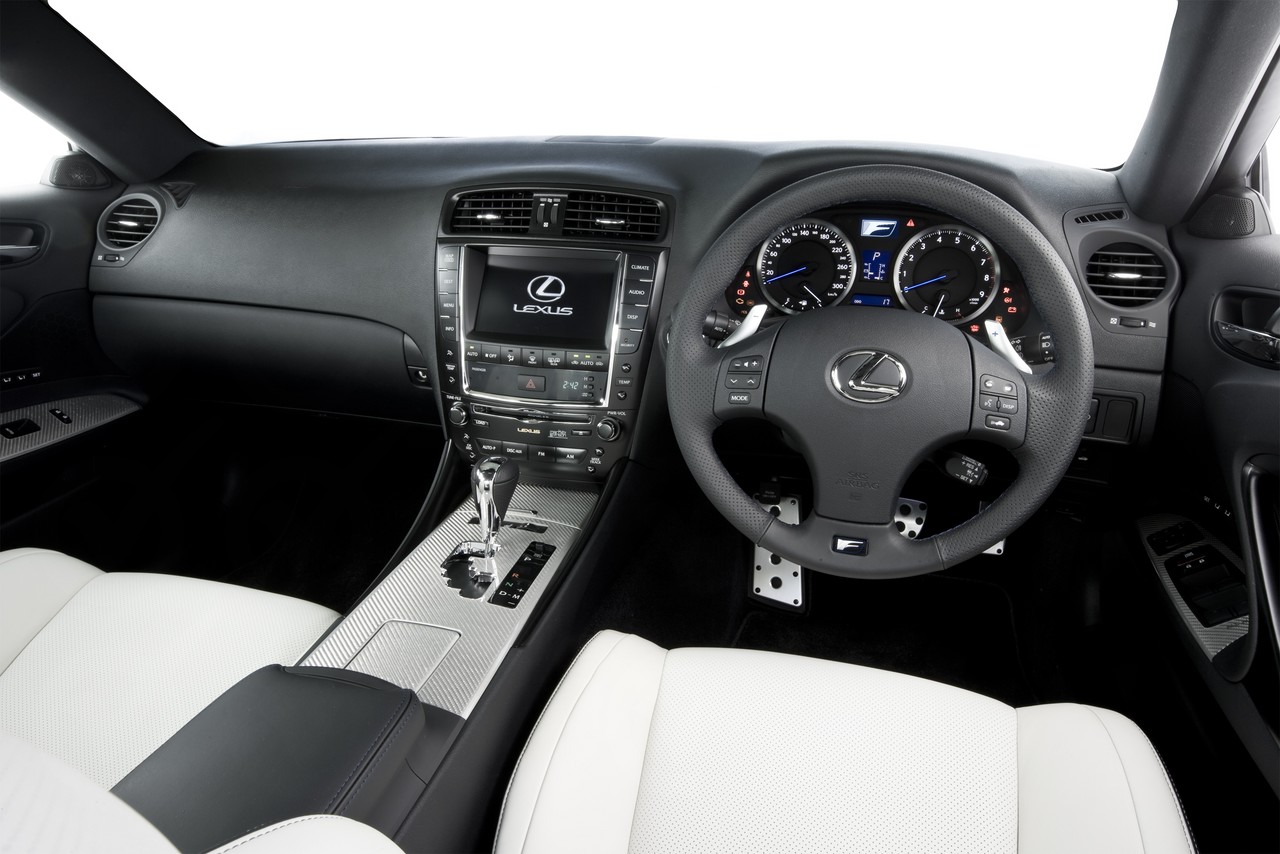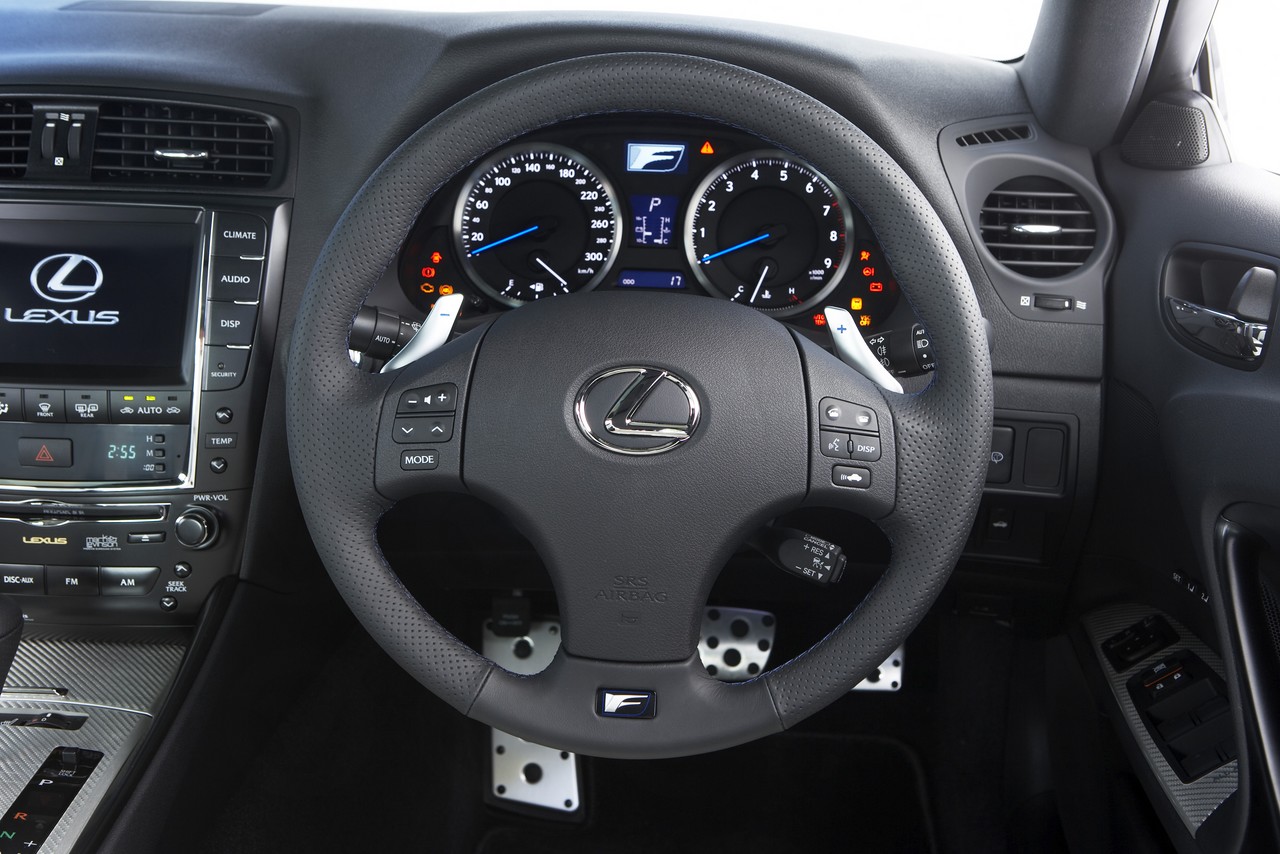
- Free-revving 5.0-litre V8 engine
- Supportive front seats
- Impressive dynamics
- Powerful Brembo brakes
- Accurate steering
- Firm ride and underdamped suspension rebound
- Engine has peaky power delivery
- Tall gearing for automatic transmission blunts performance
- Cramped rear seat
Overview
Released in October 2008, the Lexus IS F was a high performance, compact executive sedan. Manufactured in Japan, the rear-wheel drive XE20 IS F was powered by a 5.0-litre petrol V8 petrol engine that was mated to an eight-speed automatic transmission. Furthermore, the IS F was solely available as a Sport Luxury variant.
2UR-GSE engine
The 5.0-litre 2UR-GSE V8 petrol engine had a die-cast aluminium block, aluminium heads, magnesium cylinder covers, titanium inlet valves, double overhead camshafts per cylinder bank, four valves per cylinder, variable intake and exhaust valve timing (‘Dual VVT-i’), VVT-iE camshaft timing (i.e. an electrically-operated actuator controlled intake camshaft timing, whereas exhaust camshaft timing used a conventional hydraulic actuator), a two-stage intake system, a twin injection fuel system which combined direct injection with traditional port injection (the latter for more precise air/fuel mixing under low and medium load conditions) and a compression ratio of 11.8:1.
Transmission
The eight-speed automatic transmission had a sequential shift (‘M’) mode which could be controlled via steering wheel gearshift paddles. In ‘M’ mode, the transmission could provide up-shift times of 0.1 seconds and included a gear-hold feature – up to the engine’s 6800 rpm rev limit – and torque converter lock-up from second through to eighth gear for fast gearshifts in the sequential shift mode. On down-shifts, throttle blipping control could match the engine speed to the gear, providing for down-shifts in 0.2 seconds.
Dimensions
Compared to the XE20 IS , the IS F was 85 mm longer (at 4660 mm), 15 mm wider (1815 mm), 10 mm lower (1415 mm) and had the same wheelbase (2730 mm). Visually, the IS F could be identified by its more bulbous bonnet, wire-mesh grille and unique bumpers and side skirts.
Suspension
Like the IS, the IS F had double wishbone front and multi-link rear suspension; the IS F, however, had higher-rate coil springs, larger diameter monotube dampers, thicker stabilizer bars and larger wheels and tyres (detailed further, below).
| Variant | Engine | Trans. | Peak power | Peak torque | |
|---|---|---|---|---|---|
| IS F | Sports Luxury | 5.0-litre petrol V8 (2UR-GSE) | 8sp auto | 311 kW at 6600 rpm | 505 Nm at 5200 rpm |
Safety equipment
Standard safety equipment for the IS F included dual front airbags, front and rear side airbags, full-length curtain airbags (i.e. for front and rear occupants), dual front knee airbags, ABS, brake assist, electronic brake force distribution, electronic stability control, traction control and front seatbelts with pretensioners and load limiters.
The IS F was fitted with Lexus’ ‘Pre-Collision System’ (PCS) which prepared the seatbelt pretensioners and brake assist system when an emergency situation was detected. The IS F was also fitted with Lexus’ Vehicle Dynamics Integrated Management (VDIM) system – which included active steering control – and would intervene prior to the electronic stability control system to prevent the vehicle from breaking traction.
Brakes
The IS F had 360 mm by 30 mm ventilated pillar-fin front brake discs with six-piston Brembo calipers and 345 mm by 28 mm ventilated pillar-fin rear discs with twin-piston calipers.
Features: IS F Sports Luxury
Standard features for the IS F included 19-inch BBS forged alloy wheels with 255/40 R19 front tyres and 255/35 R19 rear tyres, a fourteen speaker Mark Levinson sound system with six-stack CD player, MP3/WMA compatibility and auxiliary inputs, dual-zone climate control air conditioning, leather seats, satellite navigation with a seven-inch touch screen, DVD player, active cruise control with speed alert, rear vision camera, directional bi-xenon headlights with washers, front and rear fog lights, automatic headlights, rain-sensing wipers, front and rear parking sensors, park assist display, a leather-wrapped steering wheel, Bluetooth mobile phone connectivity with voice recognition, remote central locking with proximity key, power windows and heated mirrors, a power adjustable steering column, a power-operated sunroof, a trip computer and an immobiliser.
Initially, the IS F was also fitted with an electronically-controlled limited slip differential (see also ‘September 2009 update’, below).
September 2009: IS F update
In September 2009, the IS F was updated and fitted with a limited slip Torsen mechanical differential – when a rear wheel lost traction, the Torsen differential would operate to direct torque to the wheel with grip. Other changes included an upgraded satellite navigation system (with improved route guidance, functionality and map view), USB input with software for track selection via the touch screen, foldable rear seat head restraints and a new steering wheel, centre cluster design and switchgear.
December 2010: IS F update
In December 2010, the IS F was updated again for Euro V emissions compliance and the suspension was revised for improved ride comfort and high-speed stability. Visually, the updated IS F could be identified by its daytime running lights and blacked-out headlight lenses. Inside, the instruments were rearranged and featured a large central tachometer (with rev indicator illumination) and digital speed read-out, carbon-fibre centre console inserts, reshaped driver’s seat and updated steering wheel.
September 2011: IS F update
In September 2011, the IS F was updated again with low-friction, low-viscosity Sachs dampers for improved bump compliance, stiffer springs and wider front tyres (increased from 8.0 inches to 8.5 inches). Visually, the updated IS F could be identified by its new 14-spoke BBS alloy wheels and red/black leather interior.
Brochure
Related links
- Press Kit: Lexus XE20 IS F (November 2008)
- Press Release: Lexus XE20 IS F – mechanical LSD (September 2009)
- Press Release: Lexus XE20 IS F – upgraded suspension (December 2010)
- Flyer: Lexus XE20 IS F (August 2013)
- Wikipedia.org: Lexus XE20 IS F
